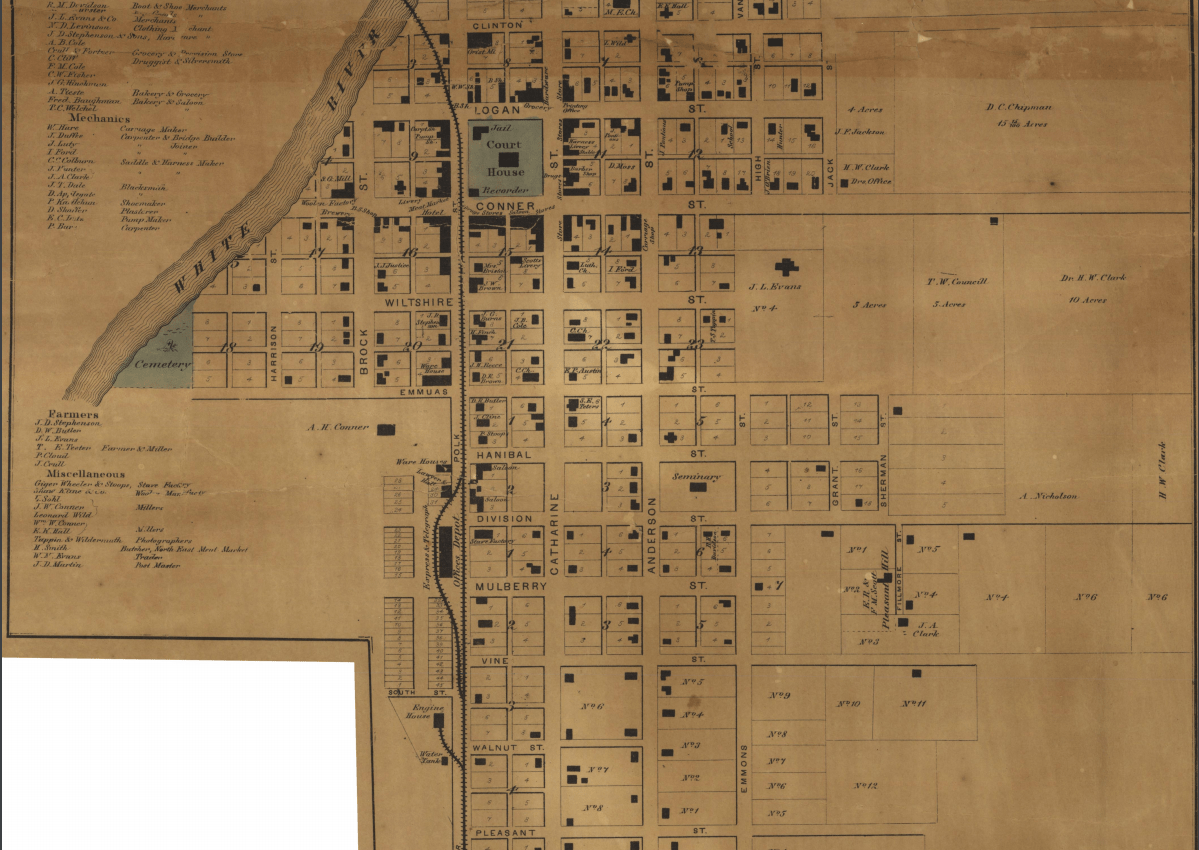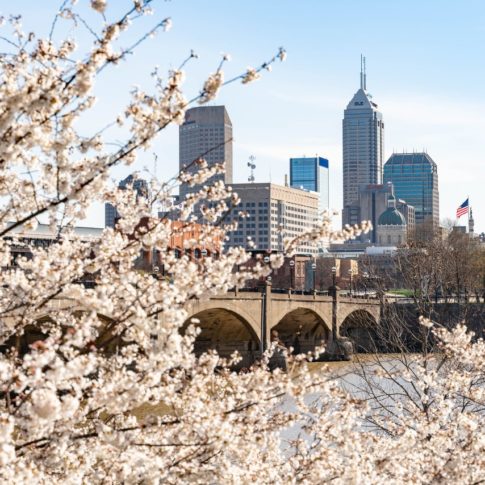Central Indiana lies within the Wabash River Drainage Basin, with both Hamilton and Marion counties predominantly belonging to the White River Subbasin. Glaciers formed this topography about 20,000 years ago, with the waterways winding and changing shape for thousands of years while establishing White River as the central waterway to this area. Tributaries Stony Creek and Cicero Creek feed into White River in Hamilton County while Fall Creek and Eagle Creek feed into Marion County. The second northernmost anchor of White River within Hamilton County lies in the Meadow Reach, from 206th Street south to 126th Street, at Noblesville.
Early Native occupants of this land included many Great Lakes tribes: the Myaamia (Miami Nation), the Kaskaskia (Peoria Tribe), Kiikaapoi (Kickapoo), and later the Lenape (Delaware Tribe). Noblesville follows a similar trajectory to that of its northern neighbor, Strawtown, in that the city was established in 1819 and the county in 1823. Hamilton County, named after Alexander Hamilton, was organized in 1823, as nine townships covering about 400 square miles. Noblesville became the county seat in 1824. William Conner and Josiah F. Polk laid the town out in 1823 with 26 squares on the eastern bank of the White River. There is some debate regarding the origin of the name “Noblesville”: some sources believe the city got its name from Senator James Noble, while others contend Polk was briefly engaged to a Miss Lavinia Noble, albeit if true, the gesture was not effective. These riverfront settlements reflect the growing trend of waterways and trading post paths, both used by Native Americans and early white traders, becoming the blueprint for many initial pioneer settlements. Grist and saw mills would follow. The 1836 Indiana Mammoth Internal Improvement Act hoped to connect growing towns by a series of waterways, canals, and roads; one section of a canal was completed south in Marion County, but ultimately this project was deemed a failure as it bankrupted the state and was determined that the White River would not be navigable by large boats. However, Noblesville benefited from the prioritization of railroads and roads and by 1851, the Indianapolis and Peru Railroad arrived. The gas boom additionally helped Noblesville thrive; natural gas was discovered in 1887. And with the increase in industry and manufacturing, came pollution concerns. As early as the 1890s, newspaper accounts described the stench and dead fish along the banks of the river, positing that industrial use of the river contributed to pollution; studies even reported that the 1897 typhoid fever rates were much higher in the area between Noblesville and Indianapolis compared to the average U.S. city.
Pollution concerns did not stop town development, as Noblesville continued to experience steady growth well into the 20th century in terms of both residents and businesses. In 1922, a hydraulic dam was constructed north of Noblesville (south of Strawtown), creating additional investments in a recreational area advertised as a summer resort. By the 1940s, business expansion continued with the endeavors of Capital Furniture Manufacturing Co., Ball Brothers Strawboard plant, Noblesville Milling Co., etc. Farmland, pastures, and wooded areas became suburbanized at the initial population boom in the 1980s, followed by additional growth in the 2000s and 2010s. Noblesville has spread onto the west bank of the river and developed a riverwalk and park system along the riverfront.
Tagged in: History, Storytelling, Noblesville



